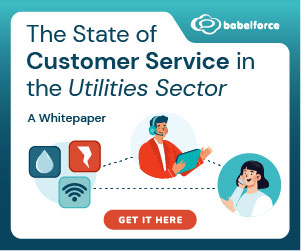Dick Bourke discusses how to best make use of quality assurance (QA) analytics tools to aid customer retention.
How many times have you heard the adage that it can cost five times more to acquire new customers than it does to retain existing customers?
Obviously, businesses want to keep their current customers as well as gain new ones. Call centre QA is a critical component of customer retention in most companies.
Those specialising in sales and customer support have an enormous responsibility in maintaining customer loyalty.
Wouldn’t it be great if there were some way to intercept customers taking their business elsewhere and reduce churn? There is. And, it’s called analytics.
The Cold Reality of Customer Retention
In our digital, I-want-it-now world, customers have a world of options available to them. They can opt out of your communications with a click. Switch services from one provider to another with another click. And social media has a huge impact on their buying habits and loyalty.
So, it’s no wonder that customer retention can be an elusive and frustrating proposition. Just consider these stats:
- 71% of consumers have ended their relationship with a company due to poor customer service
- Companies focus on acquisition more than customer retention, even though it can cost five times more to acquire new customers
- 61% of consumers take their business to a competitor when they end a business relationship
Analytics Tools Intercepts Customer Churn
There are several QA analytics tools that can be employed in a call centre to help with customer retention. Employing analytics can help identify a trend in dissatisfied customers while there’s still time to salvage the relationship.
Each interaction a customer conducts with a call centre provides clues to satisfaction levels, but many companies simply don’t utilise the information as valid customer intelligence. QA together with analytics will help categorise the clues and prevent customer loss.
Customers can be categorised as satisfied or dissatisfied based on their prior interactions with the business using NPS and CSAT. They’re then assigned a propensity-to-churn score which should alert the company’s management to the volatility of the relationship.
At-risk customers are typically identified by these qualifiers:
- An inordinate number of calls to the call centre
- Strong expression of dissatisfaction
- Mentions of competitor solutions and comparisons
- Requests for alternative pricing
- Negative customer experience issues
Using these qualifiers and other interactions, analytics can provide the full picture of each customer, and recovery efforts can be initiated.
Ideally, the business will take a proactive approach and reach out to the dissatisfied customer, especially those with a high likelihood of churn. At the very least, the business should implement initiatives that would prevent further dissatisfaction.
Call Centre QA Analytics Encourages Stronger Customer Retention Strategies
Either through standalone business intelligence, or through call centre QA processes and analytics, once customers have been identified as potential losses, a stronger retention strategy needs to kick in.
When the dissatisfied customer calls again, the call can be routed to a higher-level call centre agent who has the skills to assuage the customer’s negative issues and is in a position to intercept any loss or further damage to the relationship.
Taking a proactive approach with customers can prevent the escalation of issues when the relationship has the potential to be damaged beyond repair. These kinds of analytics initiatives can be added to the call centre with minimal additional costs but provide huge value.
In addition to customer satisfaction, a robust contact centre QA and analytics programme will help the call centre improve other indicators such as first contact resolution scores, satisfaction scores, NPS, and ROI (return on investment).
The call centre can also help other business units within the company improve their customer experience KPIs (key performance indicators) when they collaborate to improve other customer touchpoints based on intelligence gathered in the call centre.

Dick Bourke
One fact is clear for businesses in all industries. Customers have many choices and it’s easier than ever to make a switch to another vendor or provider. That’s why even a small reduction in customer churn can be critical to the life of a business. And the call centre is pivotal in retaining customers because it is on the front line of customer interactions.
Capturing relevant information from these customer communications through QA, quality monitoring and utilising analytics can be the difference between a business thriving or barely surviving. This type of dynamic tool will implement positive change throughout the enterprise as well as implementing intervention and proactive strategies.
Author: Robyn Coppell
Published On: 20th Mar 2018 - Last modified: 25th Feb 2022
Read more about - Guest Blogs, Scorebuddy






































